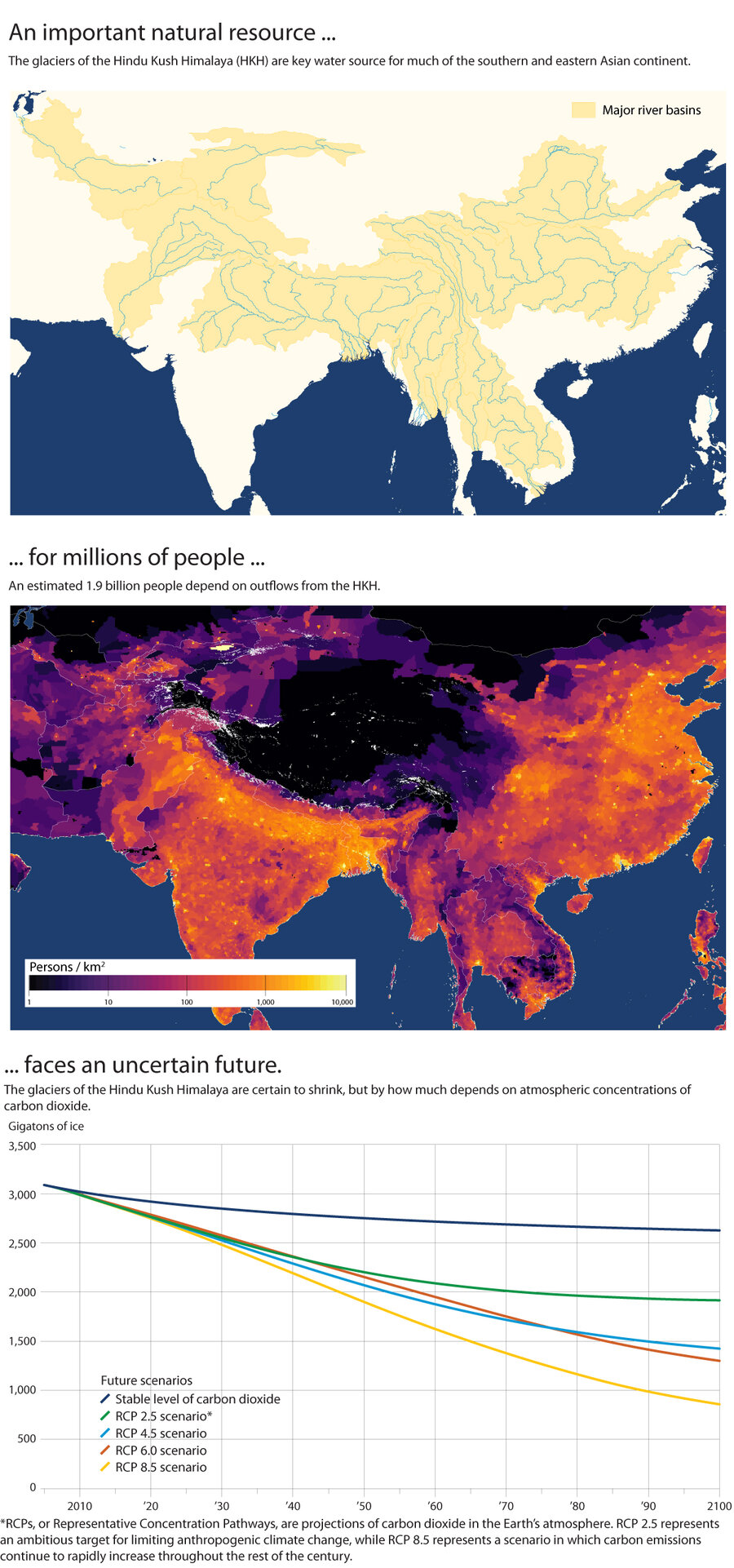Nearly 2 billion people depend on Himalayan glaciers. What if they melt?
Loading...
The largest area of permanent ice cover outside of the North and South Poles is under threat. The glaciers of the Hindu Kush Himalaya feed into 10 major river basins that sustain some of the world’s most populous and biologically diverse countries. Some 240 million people directly depend on them for fresh water; 1.9 billion benefit indirectly from their outflows.
But by century’s end, at least one-third – and as much as two-thirds – of the region’s glaciers could be gone, according to a landmark report by the Kathmandu-based International Centre for Integrated Mountain Development.
Loss of glacial mass is likely to feed into and create more glacial lakes, increasing flooding in a region already prone to natural disasters. This has crucial implications for the region’s agriculture and energy security, which depends on hydropower. Amid the troubling signs, however, researchers outlined a path to prosperity: large-scale, transnational investment, combined with closely coordinated local and national actions.
At the global level, nations must adopt transformative climate change policies, the researchers say. Locally, improved transportation and communication access can help alert residents to dangerous conditions and enable them to find safety. Particular attention should be paid to the education and empowerment of women, the report urges, as they already bear the majority of farming and nurturing responsibilities in high-risk mountain areas. Without intervention, climate could exacerbate existing vulnerabilities and gender inequity.
Combined efforts to reduce the effects of climate change and enhance disaster resilience at the community level, the researchers write, will help “enable a prosperous, peaceful, and poverty-free people.”
World Bank, ESA, NASA, Kraaijenbrink, P. D. A. et al. (2017). Impact of a global temperature rise of 1.5° Celsius on Asia’s glaciers







